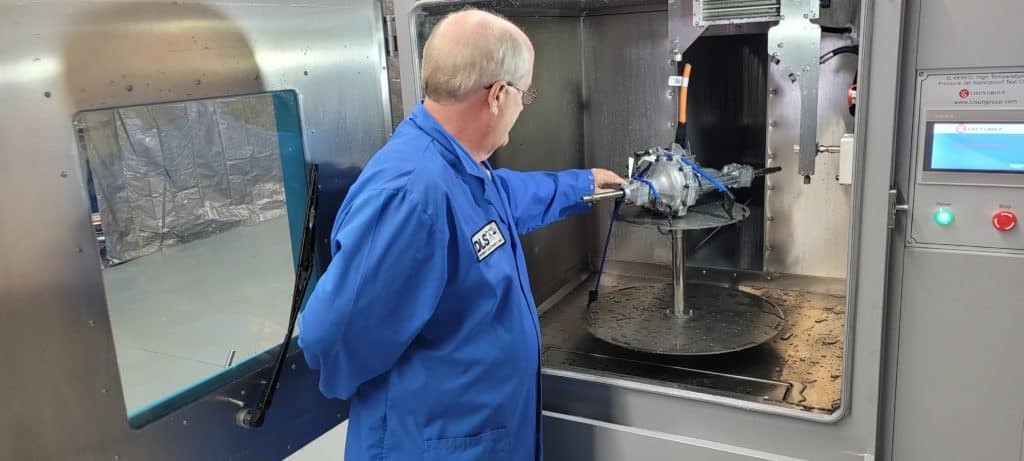
IP- Ingress Protection Testing
IP- Ingress protection regulatory testing involves the exposure of enclosures to water, fluids, and solid objects such as dust. Ingress protection standards have specific test methods that identify the levels of water, fluid, and dust exposure. These standards are established for a number of different industry uses and applications, and each identifies the level of protection, which is commonly referred to as the IP Code or ingress protection level.
The exposure to fluids can be referenced in several ways. The intent of these tests is to determine the integrity of the enclosure as it relates to waterproofness. The waterproofness testing can include liquid of various levels, volumes and test durations. These products can be exposed to dripping water, driving rain testing, splashing, spraying and water jet testing.
Equipment can also be immersed in water. The depth of the submersion and time of exposure is defined in the international standards. Different products must be immersion proof to meet the IP test standard requirements.
Solid particle/object ingress protection is determined through the use of specialized equipment, including dust chambers. For dust testing, the test item is exposed to dust that is agitated so that it is suspended in the chamber and covers the test item. Once the dust ingress testing is completed, the outside of the enclosure is thoroughly cleaned. The enclosure is then opened to see how much dust is inside. Common types of this test include blowing and settling dust requirements.
An IP Code has two digits. The code ranges from IP0X to IPX9. The first digit ranges from 0 to 6. It is the ingress protection against solid bodies. The second digit ranges from 0 to 9. It is the ingress protection against liquids. The two digits in an ingress protection marking code are completely independent of each other.
Not all equipment needs to be tested to liquid and solid test methods. Equipment to be test on to fluid exposure for the solids digit. This is why the testing is sometimes called IPX testing. Given these parameters, there are 70 combinations of ingress protection codes.
For more information on ingress protection regulatory compliance testing, please follow the links below.
- MIL STD 810 Method 506
- RTCA DO 160 Section 10
- IEC 60529 and EN 60529 Testing
- IPX1 and IPX2 Dripping Water Protection
- IPX3 and IPX4 Spraying Water and Splashing Water
- IPX5 and IPX6 Water Jets and Powerful Water Jets Certification Testing
- IPX7 and IPX8 Immersion Testing
- IPX9 High-Temperature and High-Pressure Water Jets Tests
- ISO 20653 Road vehicles